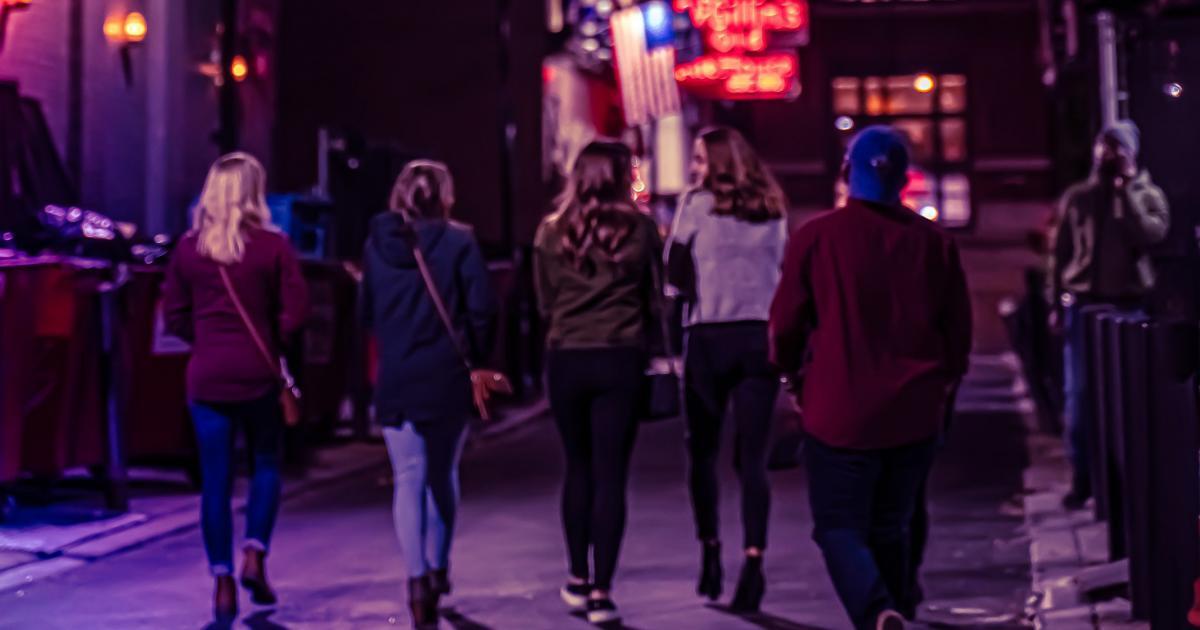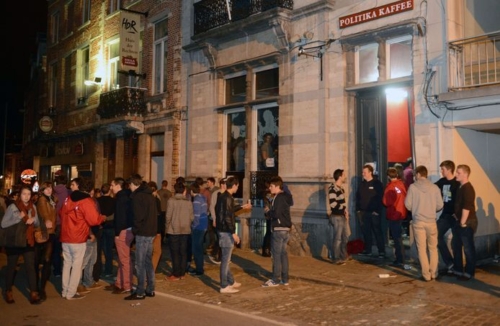Posted on 2 May, 2022

Can nighttime noise be registered without anyone reporting? And, could you even reduce it without involving the police?
Smart noise meters, an app for residents and nudging techniques are used to combat night noise in the busy Naamsestraat in Leuven (B).
Nudging techniques to reduce or prevent noise include dimming street lighting or projecting messages onto the street, such as 'People sleep here'.
.

.
What do we investigate?
We want to know how we can reduce disturbing street night noise in a non-repressive way. So by avoiding the problem. For this purpose, data is collected on nighttime noise that is used to better tackle the problem.
Naamsestraat as a case
Leuven is a real nightlife city. Nice of course, but it also brings nighttime noise with it. In 2020, the Leuven police received 2,639 reports of residents who were disturbed in their sleep. That is not at all pleasant, especially for those who have to arrive at work fresh and cheerful the next day. Research also shows that persistent noise pollution can cause health problems.
Helena Schulpé, coordinator of the night noise project: Night noise is mainly a problem in the 'trafficking streets'; streets that people use to go back home after their night out. The investigation is taking place in one of them – Naamsestraat.
Sound meters
We work in two phases. First we mapped out the problem as well as possible. That is why there are seven sound meters in the strip between the Heilige Geest College and the STUK Arts Center. They do not record conversations – that is prohibited by law – but they do analyze every nighttime noise: what is the volume, how high or how low does it sound, how long does it take, does it come from traffic, from people, from music? … ?
At the same time, we also asked residents to let us know via an app when they experience nighttime noise. Not every sound is disturbing. A very loud noise that lasts only a very short time won't necessarily wake you up. Conversely, a fairly quiet, low and long-lasting sound - bass sounds for example - can keep you from sleeping. By combining the results of the noise analysis with the reports from the residents, we can determine exactly what disturbing night noise is. And as soon as we know that, we will investigate in a second research phase what effect nudging techniques have on that nighttime noise.
‘‘Suppose one of the sound meters picks up noise at night, then we can, for example, dim the public lighting’
Silent nights
Various nudging techniques have been tested from January to December 2022. With real time nudges we try to tackle the problem as soon as it occurs. Suppose one of the sound meters picks up noise at night, then we can, for example, dim the public lighting or have it change colour. After all, research shows that soft or warm light calms people. Or we project a message on the floor, 'Please keep it quiet in this area' or 'People sleep here'. Or even switch on the lighting in some houses. This makes the noise makers aware that they are waking people up from their sleep.
Other nudges are not real time, but try to avoid the night noise. Due to the many buildings of the KU Leuven, Naamsestraat seems a bit deserted at night and revelers may get the idea that making noise is not a problem. That is why we want to give the street a more inhabited impression: plant more greenery, illuminate dark corners, place works of art, etc. This way passers-by see that it is a pleasant residential area, and hopefully that will encourage them to behave calmly.
Predicting night noise
But we're going to do more than just test nudging techniques. For example, we will also examine the effect of weather conditions or events on nighttime noise. For example, we will be able to predict better and better when the risk of night noise is high, and then we can have the police patrol more or deploy extra stewards. And of course the city and the police will continue to focus strongly – in addition to this research – on raising awareness about night noise.
Measuring is knowing
Because we will only monitor the noise in the first phase of research, and also intervene in the second phase, we can very well determine what has an effect and what does not. Does it help to project a message or adjust the lighting? Is a cozy environment the solution? Or should we let the police patrol more? So far it's gambling, but with this research we'll find out what really works.
